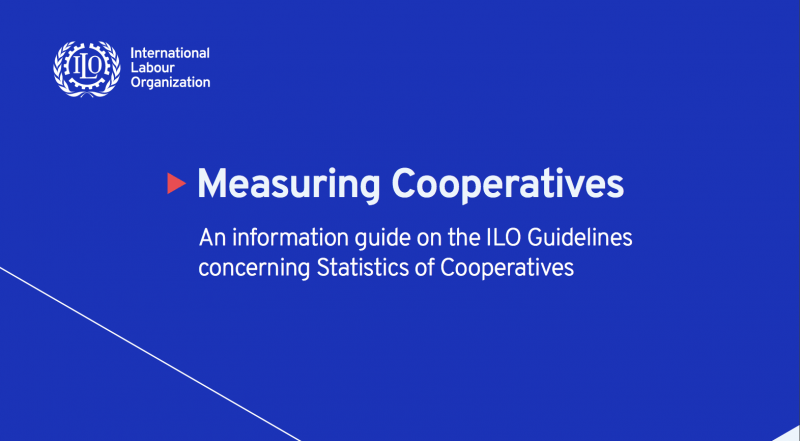New ILO information guide on measuring statistics of cooperatives
10 February 2023
The first Guidelines concerning Statistics of Cooperatives were adopted in 2018. The new ILO guide aims to provide practical guidance towards implementing them.
The International Labour Organization (ILO) published at the end of 2022 a new guide titled “Measuring cooperatives, An information guide on the ILO Guidelines concerning Statistics of Cooperatives”.
The new publication provides information about the Guidelines concerning Statistics of Cooperatives adopted at the 20th International Conference of Labour Statisticians (ICLS) in October 2018.
This new guide is aimed at the national official statistic departments, cooperative federations, and researchers, and can aid them with acquiring more specific cooperative statistics.
It “aims to explain why there is a need for reliable and comparable statistics on cooperatives, how the guidelines can be used to support production of statistics on cooperatives, and provide an overview of the further work needed to put the Guidelines into practice”.
A need for harmonized global cooperative statistics was been identified, and the Guidelines were developed in response. It is necessary to have multiple good quality statistics that cover, for example, number and types of cooperatives, number of members of cooperatives, number of employees working in cooperative, etc. If quality statistics are gathered, it would be possible to make a comparison with the official statistics on the wider economy and the labour market, which would help with measuring social impact of cooperatives and better identifying their needs. However, currently statistics on cooperatives are not always produced regularly, or they are lacking in parameters.
The Guidelines concerning statistics of cooperatives are an important step towards addressing these issues.
The new guide suggests methodological work required to put the Guidelines into practice.
ILO Member States will need to focus on the following objectives:
- Undertake preparatory work to identify the national requirements and landscape for statistics of cooperatives;
- Identify and assess existing data, survey questionnaires, databases, sample frames and other information and resources that could be relevant to compile the statistics specified in the Guidelines and to meet national needs for statistics on cooperatives;
- Develop and test methods to collect data from businesses in administrative and statistical registrations, censuses, and surveys;
- Develop and test methods and questions to be used in household surveys to identify as a high priority;
- Develop and test methodologies to assess the economic performance of cooperatives and the extent to which data available in existing sources are adequate.
At the time of the Guidelines’ publication in 2018, worker and social cooperatives represented by CICOPA were well-recognized, which is particularly important since, for instance, the concept of worker cooperatives does not exist or is not fully recognized in certain countries. For example, the concept of “worker-members of cooperatives” was fully recognized as a specific form of cooperatives at its own right.
Read our 2018 analysis on the Guidelines here.
Read the new information guide here.

